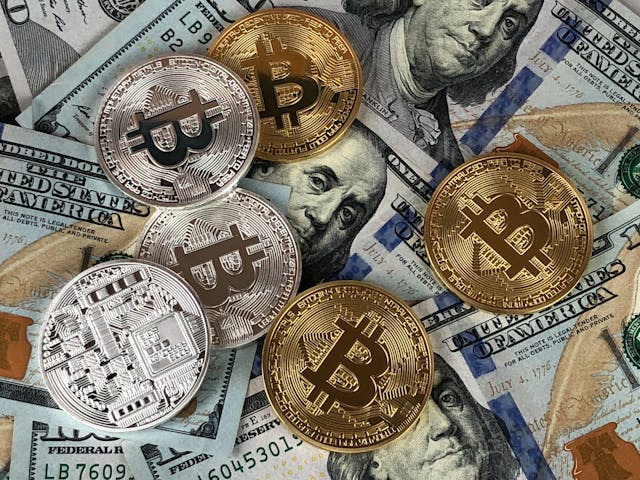Introduction
Surge in popularity and volatility of cryptocurrencies in recent years
Over the past few years, digital currencies like Bitcoin, Ethereum, and other altcoins have moved from fringe innovations to mainstream financial assets. Retail investors, institutions, and tech entrepreneurs have all embraced crypto for its decentralization and profit potential. However, with that growth has come extreme market volatility—prices have soared and crashed, often within short timeframes—leaving investors exposed to significant risk.
Growing involvement of U.S. regulators in shaping the digital asset landscape
As the crypto market expands, U.S. regulators have stepped in with increased scrutiny. Agencies like the Securities and Exchange Commission (SEC) and the Commodity Futures Trading Commission (CFTC) are now playing a more active role in overseeing digital assets. Their focus includes investor protection, preventing fraud, and determining which tokens fall under existing financial laws. These efforts mark a shift from the previously hands-off approach and signal a new era of oversight.
Importance of legal clarity for investors, exchanges, and emerging projects
Legal uncertainty has long been a concern in the crypto space. Without clear rules, startups face compliance challenges, investors risk legal gray areas, and exchanges struggle with operational consistency. Establishing a consistent regulatory framework is essential to protect users while still fostering innovation within the digital asset industry.
1. SEC and CFTC Enforcement Actions
Overview of lawsuits and investigations into major crypto firms and tokens
In recent years, federal agencies have intensified legal actions against several major players in the crypto space. The Securities and Exchange Commission (SEC) and the Commodity Futures Trading Commission (CFTC) have launched investigations and filed lawsuits against companies for alleged violations of securities laws, fraud, and unregistered offerings. These efforts aim to bring accountability to a largely unregulated market and signal that crypto is no longer outside the reach of financial law.
Debate over whether cryptocurrencies are securities or commodities
A central issue in crypto regulation is the classification of digital assets. The SEC often views tokens as securities if they meet the criteria of the Howey Test, which evaluates whether an investment is made with an expectation of profit through the efforts of others. Meanwhile, the CFTC classifies certain tokens—like Bitcoin—as commodities. This jurisdictional overlap has led to confusion, inconsistent enforcement, and calls for clearer legislative definitions.
High-profile cases (e.g., Ripple, Coinbase) and their implications
Notable legal battles, such as the SEC’s case against Ripple Labs over XRP and its scrutiny of Coinbase’s listing practices, have drawn national attention. The outcomes of these disputes could set legal precedents, influencing how future crypto projects are launched and regulated across the country.
2. Stablecoins and Central Bank Digital Currencies (CBDCs)
Regulatory concerns around the use and backing of stablecoins
Stablecoins, which are digital tokens pegged to the value of fiat currencies like the U.S. dollar, have grown rapidly as a means of digital payment and value storage. However, regulators are increasingly worried about their stability and legitimacy, particularly when issuers lack transparency about reserves. There is growing concern that without clear oversight, stablecoins could pose systemic risks to financial markets and consumer protection.
Proposed frameworks for transparency and reserve requirements
To address these concerns, lawmakers and financial agencies have proposed guidelines aimed at improving the reliability of stablecoins. These proposals include requirements for full asset backing, routine audits, and clear disclosures about how reserves are held. The goal is to ensure that stablecoins maintain their value during times of stress and do not disrupt broader economic stability.
Government exploration of a U.S. digital dollar and its potential impact
In parallel, the U.S. government is studying the feasibility of a Central Bank Digital Currency (CBDC), often referred to as a digital dollar. A CBDC could offer a secure, government-backed alternative to private stablecoins, potentially reshaping the payments landscape. If implemented, it may redefine the role of traditional banks and enhance financial inclusion through faster, low-cost transactions.
3. Crypto Exchanges and Compliance Challenges
Requirements for registration, KYC/AML standards, and transparency
Cryptocurrency exchanges operating in the U.S. are expected to follow financial regulations similar to traditional financial institutions. This includes registering with relevant agencies and complying with Know Your Customer (KYC) and Anti-Money Laundering (AML) rules. These measures are designed to prevent illicit activity, improve transparency, and ensure that exchanges operate with greater accountability. However, the decentralized and fast-moving nature of the crypto industry makes full compliance a significant challenge.
International exchanges facing U.S. legal actions (e.g., Binance)
Several global exchanges, including Binance, have come under scrutiny from U.S. regulators for allegedly offering services to American customers without proper registration. Legal actions have focused on issues like lack of compliance, failure to restrict access, and insufficient safeguards against illegal transactions. These cases highlight the reach of U.S. laws, even for companies based overseas, and reflect regulators’ efforts to enforce accountability across borders.
Push for consistent regulatory frameworks across state and federal levels
The lack of a unified national policy has created confusion, with states enforcing their own licensing rules and compliance standards. Industry leaders and policymakers are increasingly advocating for a cohesive federal framework to streamline oversight, reduce regulatory uncertainty, and promote fair competition among crypto platforms nationwide.
4. Future Outlook: Innovation vs. Regulation
Balancing consumer protection with encouraging blockchain innovation
As the digital asset space evolves, regulators face the complex task of safeguarding consumers without stifling innovation. Blockchain technology offers transformative potential across finance, healthcare, and supply chains. Yet, unregulated growth poses risks like fraud, market manipulation, and data breaches. Finding a middle ground where innovation can thrive while investors remain protected is key to long-term industry health.
Industry response to increasing regulatory pressure
In response to stricter oversight, many crypto firms are taking proactive steps to align with regulatory expectations. Some are enhancing transparency, improving internal compliance systems, and collaborating with lawmakers to shape future policies. Others, however, have opted to relocate or restrict access in the U.S., citing regulatory uncertainty as a barrier to growth. The industry is increasingly vocal about the need for clear and fair guidelines.
Predictions from legal experts and financial analysts on what’s next Legal and financial experts predict that regulatory clarity will define the next phase of crypto development. Many foresee bipartisan efforts to craft comprehensive laws that classify digital assets, define agency roles, and establish investor protections. While stricter rules may narrow short-term profits, they could build a more trustworthy and resilient market in the long run.

















































